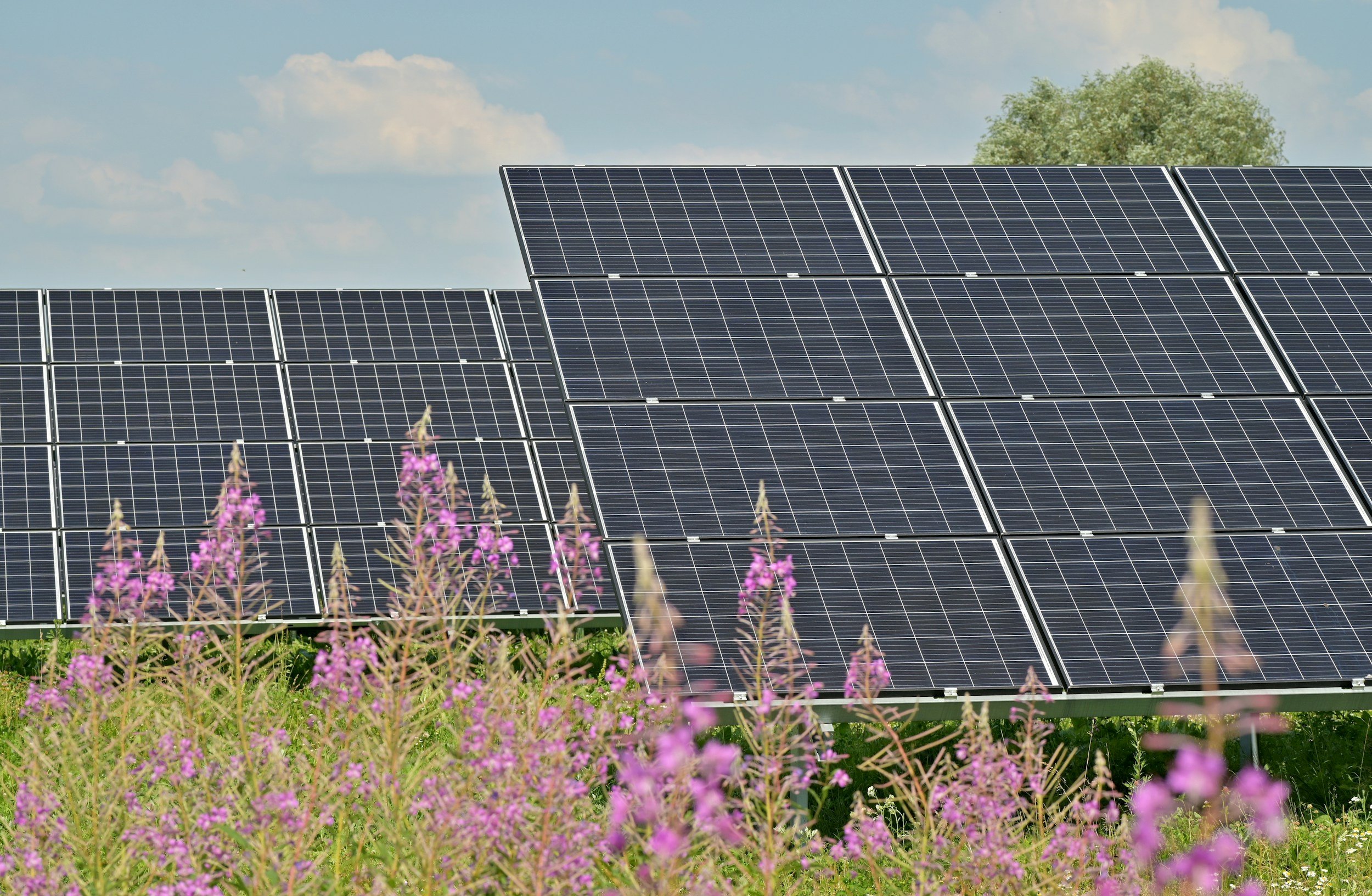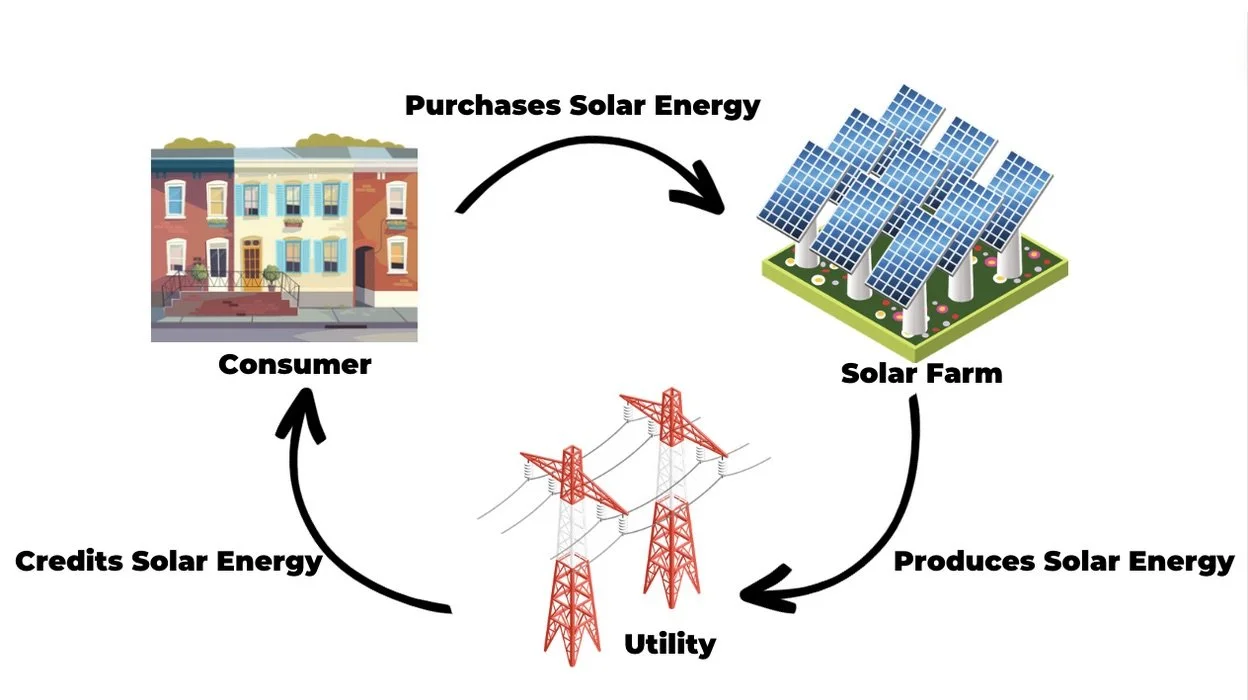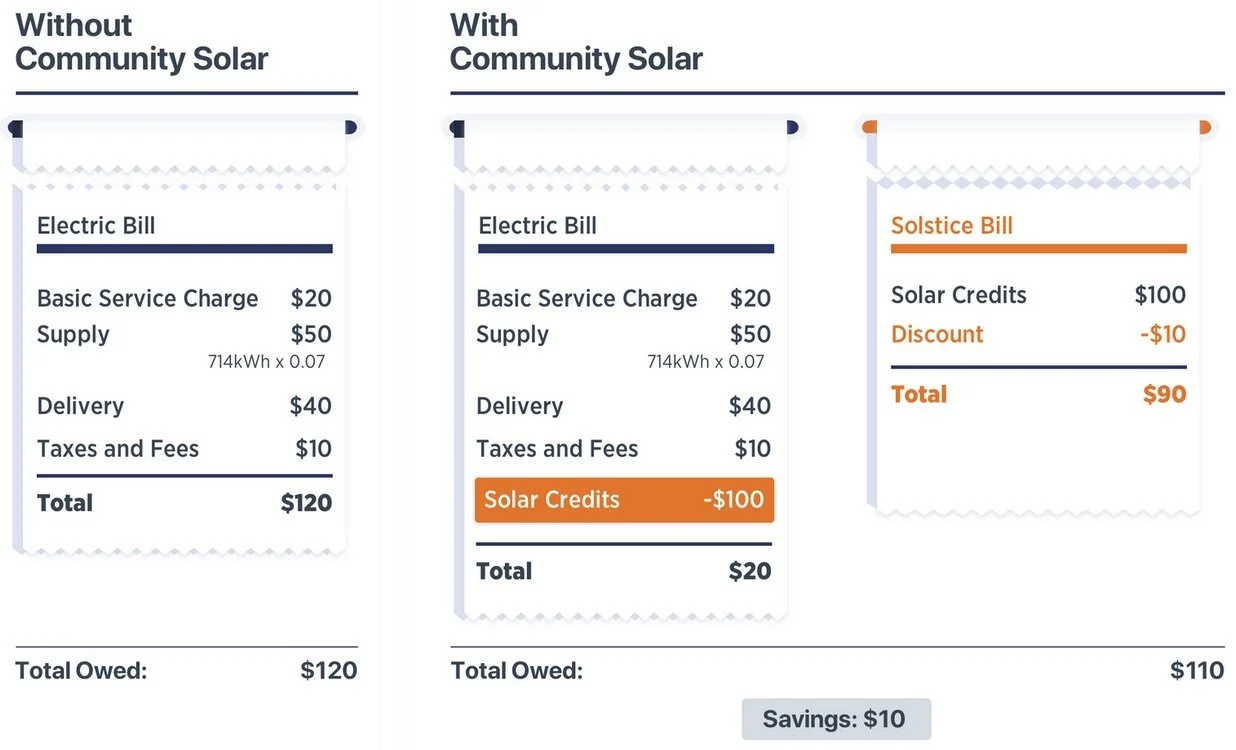
Commmunity Solar
What is Community Solar?
Community solar, also known as shared solar or solar gardens, refers to solar photovoltaic (PV) systems that provide electricity to multiple community subscribers. Think of it as a solar farm, supplying electricity to the community it is located in. The solar installation is typically located offsite in a centralized place. Participants People can buy or lease some of the panels. Or they can pay for a part of the total electricity generated through the solar garden. This way, even those who can't put solar on their own roof can still access solar energy.
There are two primary models to access a community solar system:
Ownership model: Subscribers make an upfront investment to own or lease a portion of the solar panels. They receive bill credits, tax incentives, and long-term savings based on their share of electricity generated.
Subscription model: Participants pay a lower upfront cost to access a portion of the solar output, receiving monthly bill credits. This allows flexibility as electricity needs change, with less commitment and maintenance responsibilities.
Community solar projects can be organized in several ways:
Utility-sponsored model: The local utility owns and manages the project, with customers subscribing for a fee.
Special Purpose Entity (SPE) model: Private investors and businesses develop and administer the system. This allows access to tax incentives but can have complex legal requirements.
Nonprofit model: A charitable organization raises donations to fund the solar array and provides electricity benefits to the community. Donors cannot directly share in electricity profits due to tax rules.
Due to regulations, community solar farms typically cannot send electricity directly to consumers. This graphic shows how energy is therefore transmitted. Electricity is produced at a solar farm and sold to the area’s utility. The utility then transmits and distributes the electricity on the main grid with electricity produced from other sources. Participants of the community solar system are then given credits on their bill for the solar energy produced at their farm. See below for an example utility bill with community solar credits.
Graphic: Climable, 2023
How Does Community Solar Work?
Due to utility franchise laws, community solar farms typically cannot directly transmit electricity to consumers. Instead, the solar farm sells electricity to the utility via a Power Purchase Agreement (PPA). The utility then sells the electricity back to consumers through virtual net metering. Virtual net metering is a billing mechanism that allows consumers to receive credits on their utility bills for their share of the solar energy produced by the community solar farm.
Community Solar in Massachusetts
Massachusetts was an initial leader in community solar in the country. It was one of the first states to offer community solar options to consumers when it passed necessary legislation way back in 2008. Since then, the state has adopted an incentive-based approach to community solar through its broader solar energy programs, such as Solar Massachusetts Renewable Target (SMART), which started in 2018. SMART pays solar projects for each unit of energy they produce. It pays more for community solar projects, especially those that help low-income households.
While Massachusetts doesn't have a standalone community solar program, the SMART program has specific incentives to encourage community solar adoption:
Community Shared Solar Adder*: This gives additional compensation for community solar projects.
Low-Income Community Shared Solar (LICSS) Adder: At least half the power must benefit low-income subscribers. People can qualify through utility aid programs or by living in certain neighborhoods (EJ neighborhoods).
*Adder is used as a synonym for “incentive” in this program’s documentation.
What are the Benefits of Community Solar?
Overall, community solar helps more people access clean energy, even if they can't install solar panels on their own roofs. It also offers a valuable opportunity to advance the clean energy transition and energy justice by giving consumers control over their electricity and a way to reduce their carbon emissions.
Some specific benefits of community solar include:
Access to clean energy for those with shaded roofs, bad roof angles, or not enough roof space
Access to clean energy for renters, apartment residents, and low-income families
Offers cost savings of 10-15% on average through virtual net metering (e.g., $5-10/month)
Allows people to change how much solar they use as their needs change
Reduces pollution and the need for fossil fuels
Strengthens the power grid by spreading out energy production
Creates competition that can lower solar costs for everyone over time
This example electricity bill depicts how solar credits from a community solar array would influence an individual’s electricity costs in a billing cycle.
Graphic: Solstice, 2023
What are Some Challenges to Community Solar?
A significant challenge for community solar is working with utility companies, especially to connect to the power grid. Different states and utilities have different rules for how they credit and pay for community solar. This makes it hard to know who can join a project.
Additionally, the process of developing community solar arrays can be lengthy and expensive. Utilities often charge developers a lot of money to connect the farm to the grid. They can also take a long time to approve projects and are often not transparent on how they decide which projects to approve. It’s also unclear how federal tax breaks for solar, like the solar investment tax credit, work for community solar members. It depends on details like if the community solar participants own their portion of solar panels or just buy the power from the community solar farm.
The cost to sign up for community solar is another big challenge, especially for low and moderate-income households. Many community solar projects require a large upfront payment. Often, these households cannot afford the upfront cost, and it can be difficult for them to secure fair loans to cover that cost.
Finally, there is the risk of scams and bad deals. Communities are not experts in solar technologies and are not fully aware of utility laws and regulations. Some community solar ventures may take advantage of this lack of experience and knowledge by locking communities or households into costly deals.
Ways to solve these issues:
Policymakers can pass new state regulations and incentives to make community solar accessible for low and moderate-income communities.
Public Utility Commissions can force utilities to help make the process fair and transparent
Developers and utilities can offer plans with no startup costs for low and moderate-income communities
State policymakers can also create incentives for non-profits and community-based initiatives
State and local governments and other organizations can educate community-based organizations and empower them to inform their communities about adopting community solar, best practices, and risks of scams
If you’re interested in becoming a community solar participant, so be sure to thoroughly research any new opportunity before committing financially. This document is for educational purposes only and should not be used for any legal purposes. For resources on finding a community solar project that suits your household’s needs visit EnergySage for more information.


